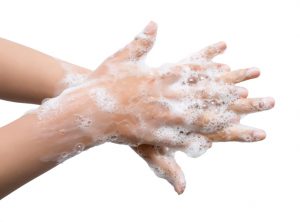Washing Your Hands: This Simple Step Can Save Lives
April 30, 2018
Washing our hands is a basic part of our hygiene and for health promotion. It’s the most important part and easiest way of reducing infection transmission. And yet, so many people don’t wash their hands regularly or they don’t wash them properly

The World Health Organization (WHO) understands that lack of clean hands is a major contributor to illness around the world. The organization marks the importance of hand hygiene on May 5 with Hand Hygiene Day.
Hand washing in the community
Most cases of sepsis start in the community; people become ill at home, school, or work. Infections can be spread many ways, but one of the most common forms is transmission by hand. Despite this, not everyone washes their hands or if they do, they may not be washing them properly. A study published by the Minnesota Department of Health is eye opening. Researchers looked at people using public restrooms and how many washed their hands after using the facilities. The results showed that only between 64% to 75% of women washed their hands and between 30% to 51% of men did. These studies also found that only 5% of people who did wash their hands, did so long enough for them to kill germs on their hands.
Separate studies published by the American Society of Microbiology found people claim they wash their hands more regularly than they actually do. In one study, 97% of females said they washed their hands, but only 75% really did; 92% of males said they did, but only 58% actually did. A study of middle schoolers found that while 50% of both boys and girls said they washed their hands, only 33% of the girls and 8% of the boys actually did wash their hands with soap and water.
How hand hygiene matters
The Centers for Disease Control and Prevention (CDC) is also promoting hand washing for preventing the spread of illness. Their page, Hygiene Fast Facts, lists several facts about the effects of clean hands, such as:
- Up to 1 million deaths per year worldwide could potentially be prevented by routine handwashing.
- Many foodborne diseases, such as the recent E. coli outbreak, could be prevented.
- Washing hands with soapless and waterless hand sanitizers in the elementary school classrooms could reduce school absenteeism by almost 20%
Healthcare-acquired infections
If 80% of sepsis occurs in the community, 20% occurs within healthcare facilities. Some of the infections that cause sepsis can be transmitted by people who visit patients in the hospital, but they can also be the result of a healthcare-acquired infections (HAIs). According to the WHO, 1 in 10 patients worldwide – 10% – develop an infection while receiving care. They break that down further to 7 out of every 100 patients in developed countries and 15 out of every 100 in developing countries. While not every case of infection is preventable, many infections do occur when patients become ill through preventable transmissions, the spread of viruses or bacteria through contaminated objects or unwashed hands
Preventing infections, advocating for your health
Washing your hands is your first and most important tool to stay as healthy as possible. However, once you are a patient in a healthcare facility, you will be exposed to situations where things are out of your control. Here are some steps you can take to protect yourself:
- Wash your hands after touching bedside tables, bed rails, light switches, etc.

- Wash your hands before eating and after using the bathroom or coughing, sneezing, or blowing your nose.
- Ask all visitors to wash their hands before entering your room.
- If you are on isolation, ensure your visitors follow the protocol, such as wearing masks and gloves correctly.
- When healthcare providers enter your room to provide care, if you do not see them wash their hands, ask them to please do so.
Hand washing done right
Moving your hands quickly under running water may feel like hand washing, but it’s not sufficient to adequately clean your hands. Taking a few extra seconds to wash your hands properly can make the difference between becoming ill with a preventable infection or staying healthy. Here are the simple steps to washing your hands thoroughly and effectively:
- Wet your hands with clean, running water (warm or cold)
- Apply soap
- Rub your hands together, scrubbing well and making a lather
- Don’t forget to wash the tops/backs of your hands, between the fingers and under the nails
- Wash for 20 seconds, the equivalent of singing the “Happy Birthday” song twice
- Rinse your hand under running water
- Pat dry with a clean towel or air dryer
If you are using a gel cleaner, the technique is similar:
- Make sure there is no visible dirt on your hands, otherwise use soap and water
- Apply a few drops of gel, about the size of a dime, in the palm of your hand
- Rub your hands as if you are washing with soap and water until the sanitizer is absorbed
- Allow your hands to dry before touching anything
Hand washing is the easiest and least expensive way to help prevent the spread of infection, which in turn lowers the risk of developing sepsis. Here are some links that may help you better understand the issues behind hand washing, techniques, and supplies:
Clean Hands Count for Patients
Fight Germs. Wash Your Hands! (video)





























